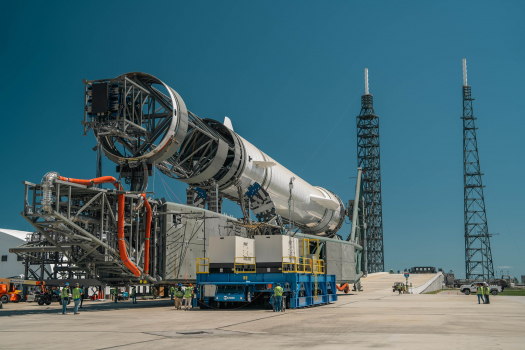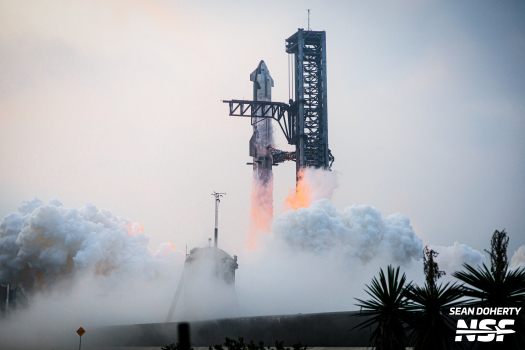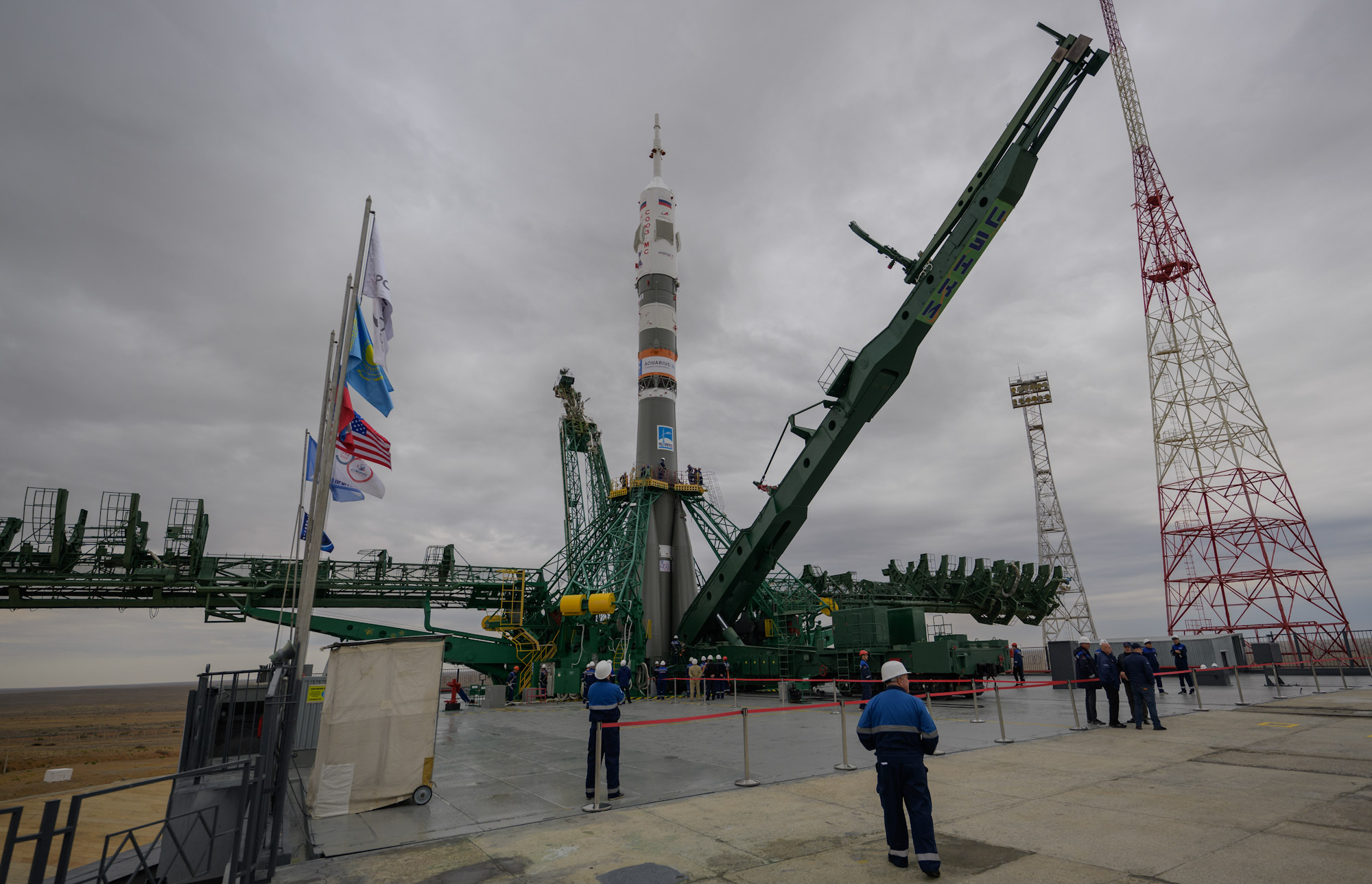The last few months aboard the International Space Station (ISS) have been eventful. Expedition 70 is underway after two crew handovers, a bearing on a solar array rotary joint seized up, and a coolant leak on the Russian segment occurred. Currently, the ISS crew has completed Russian EVA-61, although key objectives were not fully accomplished, and now US EVA-89 has been done as well.
Expedition 70 officially began after the Soyuz MS-23 spacecraft left the Station with cosmonauts Sergey Prokopyev and Dmitry Petelin along with NASA’s Frank Rubio aboard. The Soyuz capsule landed safely in Kazakhstan on Sept. 27, touching down at 11:17 UTC on the steppe southeast of Dzhezkazgan.
The touchdown signified the end of the crew’s extended mission aboard the Station, which lasted over a year instead of the planned six-month mission due to a coolant leak on Soyuz MS-22. NASA astronaut Rubio set a new U.S. space endurance record of 371 days, eclipsing Mark Vande Hei’s record of 355 days, which was set in March 2022, and becoming the first American to spend over one calendar year continuously in space.

NASA astronaut and US Army Lt. Col. Frank Rubio smiling and waving after the Soyuz MS-23 landing in Kazakhstan. (Credit: Bill Ingalls/NASA)
Frank Rubio, 47, born in Los Angeles and of Salvadoran descent, is a certified family physician and flight surgeon. He was also a U.S. Army helicopter pilot and combat veteran before joining the astronaut corps. Rubio became a member of NASA Astronaut Group 22 in 2017 and launched to the Station aboard Soyuz MS-22 on Sept. 21, 2022. This was his first flight to space.
A few months later, at 00:45 UTC on Dec. 15, 2022, the MS-22 spacecraft suffered a coolant leak during preparations for a Russian EVA, which necessitated a change in plans for the MS-22 crew. Nearly ten months after that coolant leak — ascribed to a micrometeoroid impact — and eight months after Progress MS-23 suffered a similar issue, a new coolant leak was discovered on the Nauka science module of the Russian segment of the ISS.
The coolant leak was found to originate from one of two radiators on the Nauka module, which launched in 2021 after a decade-long series of delays. The leak was noticed by the ISS crew after 17:00 UTC on Oct. 9. Expedition 70 flight engineer and Crew-7 commander Jasmin Moghbeli radioed the news to Mission Control in Houston, saying “Yeah, there’s a leak coming from the radiator on MLM,” with MLM being an acronym for the Nauka module.
Images of the Nauka module and the leak were taken and sent to the ground by Expedition 70 commander and Crew-7 member Andreas Mogensen, and these images will be analyzed by ground teams for more information on the leak. Controllers in Moscow have analyzed the situation and have said there will be no significant impacts to operations.
Roscosmos issued a statement saying that the leak occurred on the external radiator circuit, which is a backup circuit on Nauka. They further stated that the primary thermal control circuit on Nauka is operating normally and the crew and the Station are not in danger. The leak has since ceased.

Expedition 70 crew photo. From left to right: Nikolai Chub, Konstantin Borisov, Andreas Mogensen, Oleg Kononenko, Jasmin Moghbeli, Satoshi Furukawa and Loral O’Hara. (Credit: NASA)
While working through the Nauka leak situation, the Expedition 70 crew, led by Danish ESA astronaut Andreas Mogensen, was also preparing for two spacewalks in October and another due before the end of the year. Along with commander Mogensen, NASA’s Jasmin Moghbeli, JAXA’s Satoshi Furukawa, and Roscosmos’ Konstantin Borisov arrived at the Station aboard the SpaceX Crew-7 mission, while Russian cosmonauts Oleg Kononenko and Nikolai Chub and NASA’s Loral O’Hara arrived aboard Soyuz MS-24.
Astronauts Mogensen and O’Hara had been planning to conduct a spacewalk on Oct. 12 to install a new high-definition camera on the Station and gather microbial samples from the Station’s exterior. However, that EVA, now known as US EVA-90, has been pushed to no earlier than this coming December due to the Nauka coolant leak.
Russian EVA-61, the first spacewalk of Expedition 70, started at 17:49 UTC on Oct. 25 and was scheduled to last for six hours and 52 minutes. Cosmonauts Kononenko and Chub, prior to the start of the EVA, were scheduled to install a synthetic radar communications system, deploy a solar sail technology satellite, and to replace electrical connector patch panels on the Russian segment of the Station.

Oleg Kononenko (with red stripes) and Nikolai Chub (with blue stripes) are seen during Russian EVA-61 on Oct. 25, 2023. (Credit: NASA)
However, Oleg Kononenko, on his sixth EVA, and Nikolai Chub, on his first EVA, could not fully accomplish all tasks. The cosmonauts collected their tools and moved to the leaking external radiator on the Nauka module, and they reconfigured the coolant valves to bypass the leaking radiator. This would allow the internal cooling system in Nauka to continue to function normally.
The work disturbed the area and a large blob of coolant was spotted. In addition, the coolant got on one of the tethers the cosmonauts were using, so they had to dispose of it later. Kononenko and Chub were ordered out of the area, and they worked on attaching a synthetic aperture radar experiment to Nauka.
After the radar experiment was attached to an adapter on the Nauka module, the cosmonauts worked to deploy the Parus-MGTU nanosatellite. This satellite was intended to deploy a solar sail experiment and was developed by students from Bauman Moscow State Technical University. After some adjustments to the deployer, the satellite was released into orbit but did not deploy the solar sail experiment at the five minute mark from deployment as expected.

Oleg Kononenko and Nikolai Chub on the Nauka module. Note the orange MiniRSA antenna next to them before deployment. (Credit: NASA)
The radar experiment, known as Napor-MiniRSA, deployed four panels but one of them was not correctly aligned. Nikolai Chub attempted to fix the issue but was not successful. The cosmonauts did not have time to work on the electrical patch panel, and they needed to wipe their suits down to remove any coolant contamination before finishing their spacewalk.
EVA-69 was completed at 01:30 UTC on Thursday, Oct. 26, after seven hours and 41 minutes outside. Roscosmos uses the hatch opening and closing to determine EVA length, as opposed to NASA’s practice of using internal battery and repressurization times. Oleg Kononenko now has 39 hours and 54 minutes of EVA time over six spacewalks, while Nikolai Chub has seven hours and 41 minutes of time outside after his first spacewalk.

Astronaut Jasmin “Jaws” Moghbeli is testing an EVA suit with the assistance of Andreas Mogensen and Satoshi Furukawa. (Credit: NASA)
Following the Russian EVA, U.S. EVA-89 had been scheduled for Oct. 30 at 8:05 AM EDT (12:05 UTC). However, additional time was needed for preparations, so EVA-89 was rescheduled for Nov. 1. The EVA began at 8:05 AM EDT (12:05 UTC) on Nov.1 when the astronauts switched their spacesuits to battery power at the Quest airlock module, as is usual with spacewalks from the US segment of ISS.
Astronauts Moghbeli, acting as EV1 with the red stripes, and O’Hara, acting as EV2 with the all-white suit, made the first spacewalks of their careers. They were scheduled to remove an antenna electronics box and replace a trundle bearing assembly on the port solar array rotary joint (SARJ) of the Station’s truss.
On Aug. 23, the ISS On-Orbit Status Report noted that the port SARJ’s trundle bearing number seven experienced a primary bearing seizure and stopped rotating. Though the secondary bearing in the assembly still worked, it was only certified for 30 days of continuous operation, and the SARJ had to be parked in a safe position to minimize the use of this bearing.
The SARJ is critical to the Station’s operation because it rotates the large solar arrays mounted to the truss, once per orbit. The solar arrays on the truss, which provide most of the power to the complex, need to be rotated frequently to face the Sun for effective power generation, and the loss of this capability would seriously impact Station operations.
Each 1161-kilogram SARJ has 12 trundle bearings, and these bearings straddle an inboard and an outboard race ring. These race rings are a little over three meters in diameter, and the inboard ring — facing the Station’s pressurized modules and central truss elements — is stationary, while the outboard ring rotates.
The SARJ trundle bearings are designed for on-orbit replacement, and that capability proved handy during the Station’s assembly phase. Some weeks after the starboard SARJ was launched aboard STS-117 and activated in June 2007, anomalous vibrations and power draw readings were noted. Subsequent inspection of the joint during an EVA found that the joint had fine metal shavings across the outboard race ring surface and on a trundle-bearing roller housing.

Astronauts Heidemarie Stefanyshyn-Piper (left) and Shane Kimbrough (right) working at the starboard SARJ during the second EVA of the STS-126 mission. (Credit: NASA)
11 trundle bearings on the joint were replaced and the outboard race ring was cleaned, then lubricated with grease during the STS-126 mission in November 2008. This repair, which needed a special tool developed for lubricating the race ring, dramatically improved the SARJ’s operation, and the joint could be operated normally. The port SARJ, which was noted as pristine during an inspection, also got treated with lubricant during STS-126 in a subsequent EVA.
EV2 Loral O’Hara worked on the trundle bearing assembly (TBA) replacement, but encountered difficulties with the bolts holding the TBA in place. EV1 Jasmin Moghbeli – with the red stripes – moved to assist O’Hara with the operation, and they eventually got the bolts removed.
O’Hara applied lubricant to the rotating race ring, and replaced the degraded trundle bearing with a new one, then replaced the thermal cover over the SARJ. Moghbeli completed the removal of an H-fixture on the 2A Beta Gimbal Assembly on the port truss to prepare the site for a future solar array upgrade in the meantime, and she also adjusted a cable that is interfering with a camera assembly.
Moghbeli and O’Hara were also scheduled to remove a failed communications box known as the Radio Frequency Group (RFG) on the starboard side of the Station. The box was unable to be removed during a prior EVA so there has been work done to figure out how to complete this task.

The special wrench designed for the second attempt to remove the failed electronics box, shown during an Oct. 6 press conference. (Credit: NASA)
This included the development of a special “RFG Wrench” to access the five aft wedge clamps holding the box to the stowage platform for the procedure. The astronauts were going to work together to attempt to free the RFG using the special tool and to stow it in the Quest airlock.
However, due to the difficulties with the bolts on the TBA, it was decided not to complete the full task of removing the RFG, and the Canadarm2 was not used during this EVA. Moghbeli and O’Hara did some of the work on the RFG, and it is now in a good position for a future EVA to finish the removal task. O’Hara also completed a get-ahead task involving reconfiguring a handle on the starboard CETA cart.
EVA-89 lasted six hours and 42 minutes and ended at 2:47 PM EDT (18:47 UTC) on Nov. 1. The TBA was confirmed to be working properly and all tasks were completed other than the removal of the RFG antenna. EVA-89 was the second spacewalk of Expedition 70 as well as the 269th overall EVA in support of ISS.
During the first weeks of Expedition 70, the Station crew filled the Cygnus NG-19 S.S. Laurel Clark with trash after unloading cargo from the spacecraft. The crew has also worked on various experiments, notably the Complement of Integrated Protocols for Human Exploration Research on Varying Mission Durations (CIPHER) suite of 14 human health studies. The CIPHER studies are being done on up to 30 astronauts on missions of various lengths from less than three and a half months to over eight months in space.

Drawing of the current complement of visiting vehicles attached to the Station. They are set to be joined by CRS-29 next month. (Credit: NASA)
The Expedition 70 crew is also preparing for the launch of another cargo spacecraft, a SpaceX Cargo Dragon, on the CRS-29 mission, which is scheduled for launch no earlier than Nov. 7, at 9:16 PM EST (02:16 UTC Nov. 8). This flight will include an atmospheric wave experiment and a modem for a laser communications experiment along with other experiments, food, supplies, and equipment.
(Lead image: The ISS and Canadarm2 soar 266 miles above the coast of Argentina. Credit: NASA)





